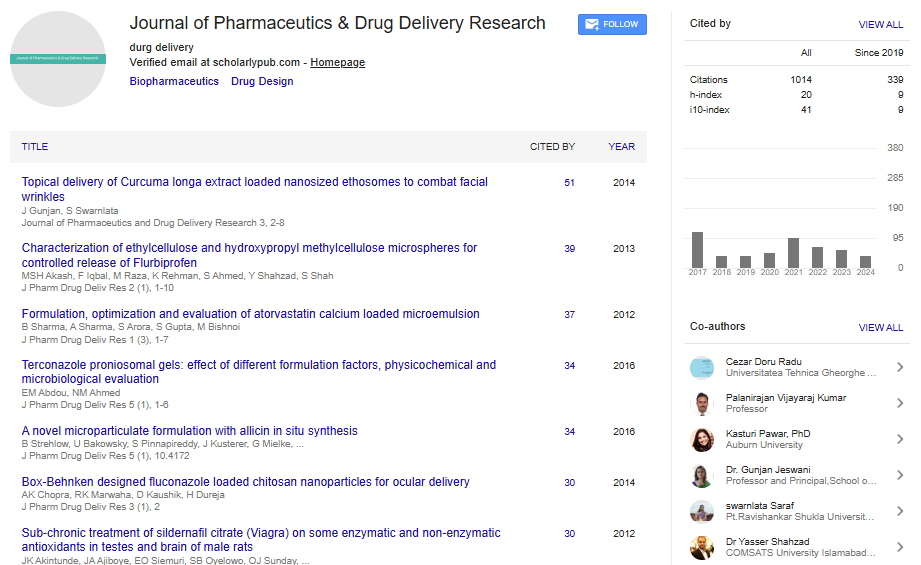Topical drug delivery with nanoparticles: Science fiction or reality?
Juergen Lademann
Centre of Experimental and Applied Cutaneous Physiology, Germany
: J Pharm Drug Deliv Res
Abstract
The demands on nanoparticles for use in dermatology and cosmetics are very different. While nanoparticles widely applied in sunscreens, like TiO2 and ZnO, shall remain on the skin surface or in the upper cell layers of the stratum corneum, nanoparticles intended for drug delivery shall penetrate through the skin barrier to the target structures in the living cells. At the Charité-Universitätsmedizin Berlin various laser scanning microscopy methods are used to investigate the penetration and storage of nanoparticles in the skin, hair follicles being in the focus of attention. Human hair follicles are ideal target structures for drug delivery. Hosting both the stem and dendritic cells, they are surrounded by a dense network of blood vessels. Investigating nanoparticles of different size and materials, it was found that particles of approximately 600 nm diameter penetrate most efficiently into the hair follicles and can be stored there for CA. 10 days. Their retention time in the hair follicles exceeds that in the stratum corneum by almost one order of magnitude. No experiment had shown, however, that particles of 40 nm-1 μm in diameter penetrated from the hair follicle into the living tissue if the skin barrier was intact. This is plausible as the hair follicle has its own barrier. The moving hair is assumed to act as a gearing pump under in vivo conditions, pushing the particles deeply into the hair follicles. Only if the barrier was disturbed artificially or by illness, nanoparticles of 40 nm in diameter had penetrated into the living tissue. For more than 20 years, academic and industrial research has been intensely focusing on the utilization of nanoparticles for drug delivery through the intact skin. However, a commercial product providing this effect is still missing. Taking into consideration that non-particulate substances poorly penetrate into the hair follicles, but once arrived there are capable of passing through the follicular barrier unto the living cells, whereas particulate substances do penetrate well into the hair follicles but cannot pass the follicular barrier, the triggered release of substances from nanoparticles in the hair follicle presents a promising field of research. Thereby nanoparticles are loaded with drugs which penetrate into the hair follicles nearby the target structures. Once the release of the drug from the nanoparticle has been triggered by a signal, the drug penetrates the last microns through the follicular barrier without assistance.
Biography
Juergen Lademann has completed his Master’s degree at the Moscow State University, the Physical Faculty, Quantum Electronics Department. In the year 2000, he was appointed as Professor of Dermatology at the Charité University Hospital, Berlin. He is the Editor of the international journal Skin Pharmacology and Applied Skin Physiology and the President of the International Society of Skin Pharmacology and Physiology. He has authored more than 600 peer-reviewed articles.
E-mail: juergen.lademann@charite.de
 Spanish
Spanish  Chinese
Chinese  Russian
Russian  German
German  French
French  Japanese
Japanese  Portuguese
Portuguese  Hindi
Hindi 
